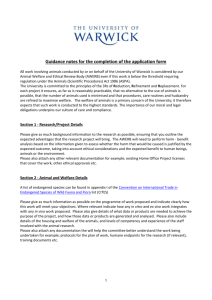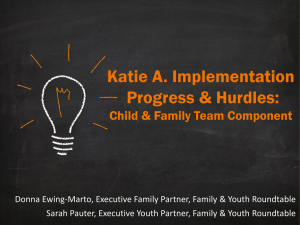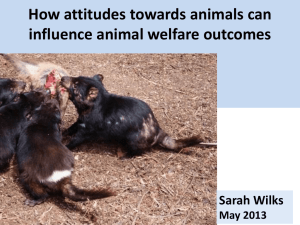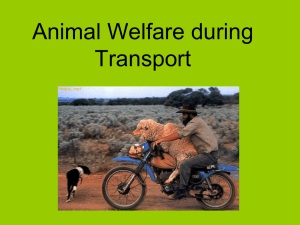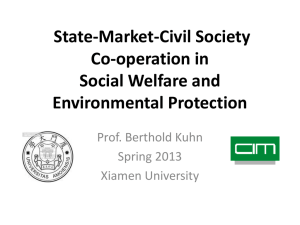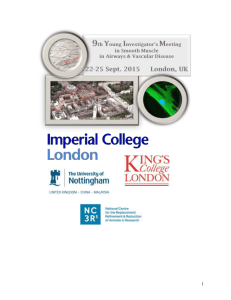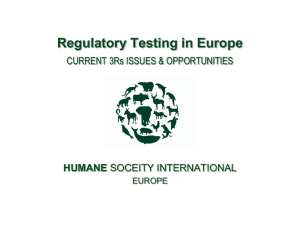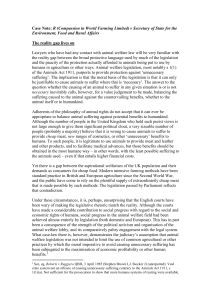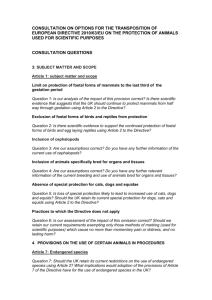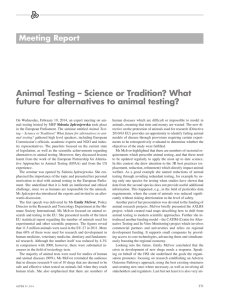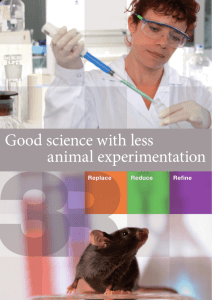The 3Rs principles in the revised Directive 2010/63 – industry position
advertisement
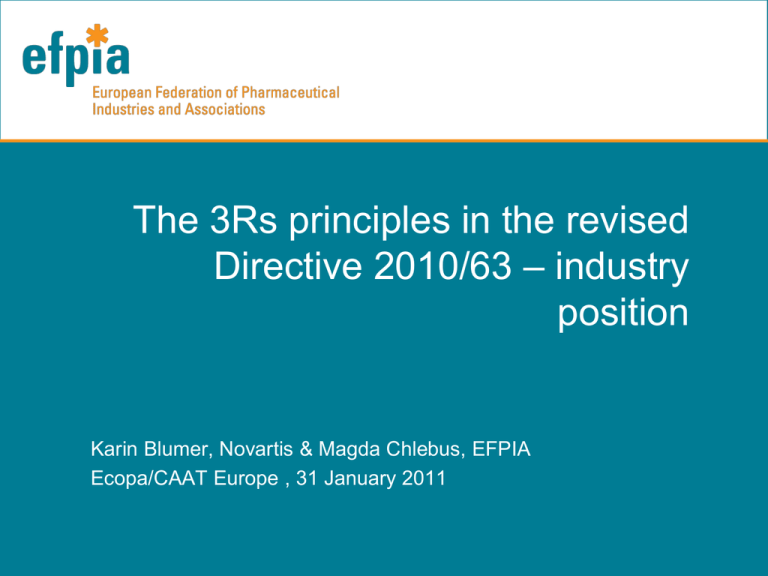
The 3Rs principles in the revised Directive 2010/63 – industry position Karin Blumer, Novartis & Magda Chlebus, EFPIA Ecopa/CAAT Europe , 31 January 2011 Drug development in the 21st century Symptomatic “Yesterday” Causal/disease-modifying Today/tomorrow increasing understanding of disease biology Shifting the scale of animal use... Research „Testing“ „The past“: Animals mainly used in pre-clinical safety and efficacy testing ...from testing to research „Testing“ Research Today’s reality: 60-80% of research animals used in discovery of disease mechanisms and druggable targets Biomedical research reality • 60 - 80%of all animals are used in discovery research – There are only limited alternatives available – Reduction and refinement are feasible but no full replacement – Tx-animals are essential to better understand genetic/epigenetic mechanisms and to discover disease pathways • Testing encompasses the remaining use 20 to 40%. – There are legion opportunities for replacement, reduction and refinement – Industry has an overarching commitment to the 3R’s in this field of further developing the drug for use in humans and animals. • Innovation implies uncharted territory – biomedical research will continue to be based on the use of animals for as long as there are unknown or novel biological processes Review of Dir 86/609 was necessary Industry objectives during the legal review: • Secure balance between research reality and needs and animal welfare • Implement measures that would have a real welfare impact • Avoid unnecessary bureaucracy that would not translate into animal welfare benefits • Base policy decisions upon sound science Good welfare = Good science • Directive 86/609 and science provide good incentives for continuously enhancing welfare • 3Rs principles are the guiding principle – however, use of alternatives where they existed is not new • Authorizations and ethical review were recommended • Limitations for use of certain species, including primates was there Where is new direct welfare benefit? Provisions with direct impact on daily practice: • Harmonization of standards across the EU • Mandatory project (ethical) review and authorizations • Professional qualifications and continued professional education • Animal Welfare Bodies in establishments • Regular and unannounced inspections • Harmonised system of severity classification • Retrospective review of projects Pharmaceutical industry position • Many of the new provisions are already part of company practice • Industry supports as rapid and harmonized transposition as possible • A number of grey areas leave room for uneven implementation • Avoiding unnecessary red tape is key to defend competitiveness of EU establishments • All three Rs should be equally important - refinement and reduction should not be neglected Opportunity to reduce red tape The directive offers possibility to reduce red tape • It sets outputs, not processes • The processes do not need to be bureaucratic but efficient • Efficiency should not be measured in number of studies delayed or blocked by administrative procedures, but how these translate into better welfare/lesser negative impact The Directive needs to be explained • Some areas reflect the compromises made - use political language – legal guidance/exemplification, needed, e.g.: – Long lasting pain that cannot be ameliorated? • As many interpretations as readers, also translation problems, e.g. : – – – – Debilitating conditions Duplication/replication Procedure/project Reuse/continued use • The network of competent authorities will be key for guidance, experience and good practice sharing Transparency measures • Are important from the CSR point of view • Offer important communication opportunity • But should not be diverted from their initial objective – providing more information to lay public about use of animals and role of alternatives in research • Communication should also be part of authorities obligations Pharma 3Rs survey 2010: current practice • Industry strives to exceed what is required by law for scientific, ethical, legislative and reputational reasons • 3Rs is a consequence of scientific and technological progress and research rationalization • Structures to enhance global coordination, share good practices and disseminate 3Rs topics, incl. reporting to top management • Same 3Rs approach to all species. Where speciesspecific approaches exist, these mainly concern NHPs • High standard requirements vis-à-vis contractors • All companies support more good practice sharing within and across sectors Conclusions • A number of new measures will have a tangible benefits, most importantly the EU-wide harmonization • Replace and Reduction should not be neglected/undermined • Red tape should not be the objective but positive welfare impact • We need to keep the momentum - constant dialogue between all stakeholders – to identify and resolve problems as soon as they arise • Industry strives to be a transparent, open partner for discussion in the years ahead Thank you for your attention
